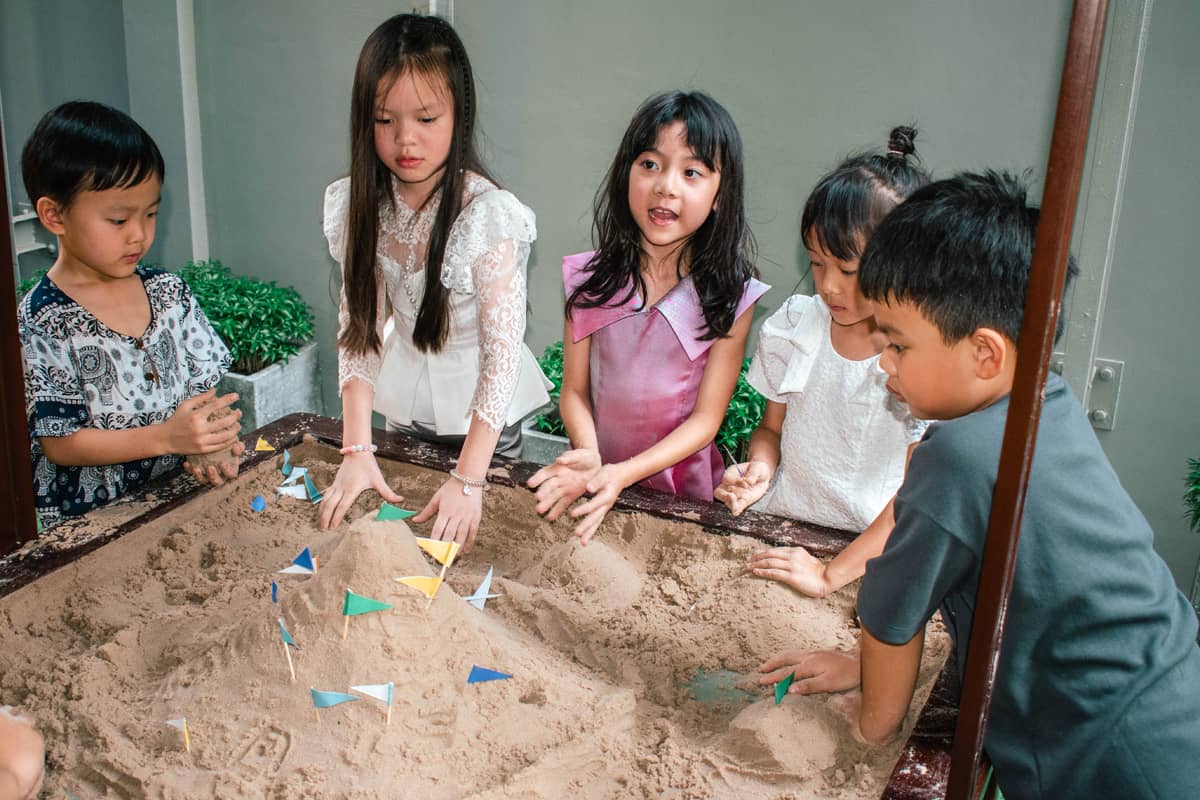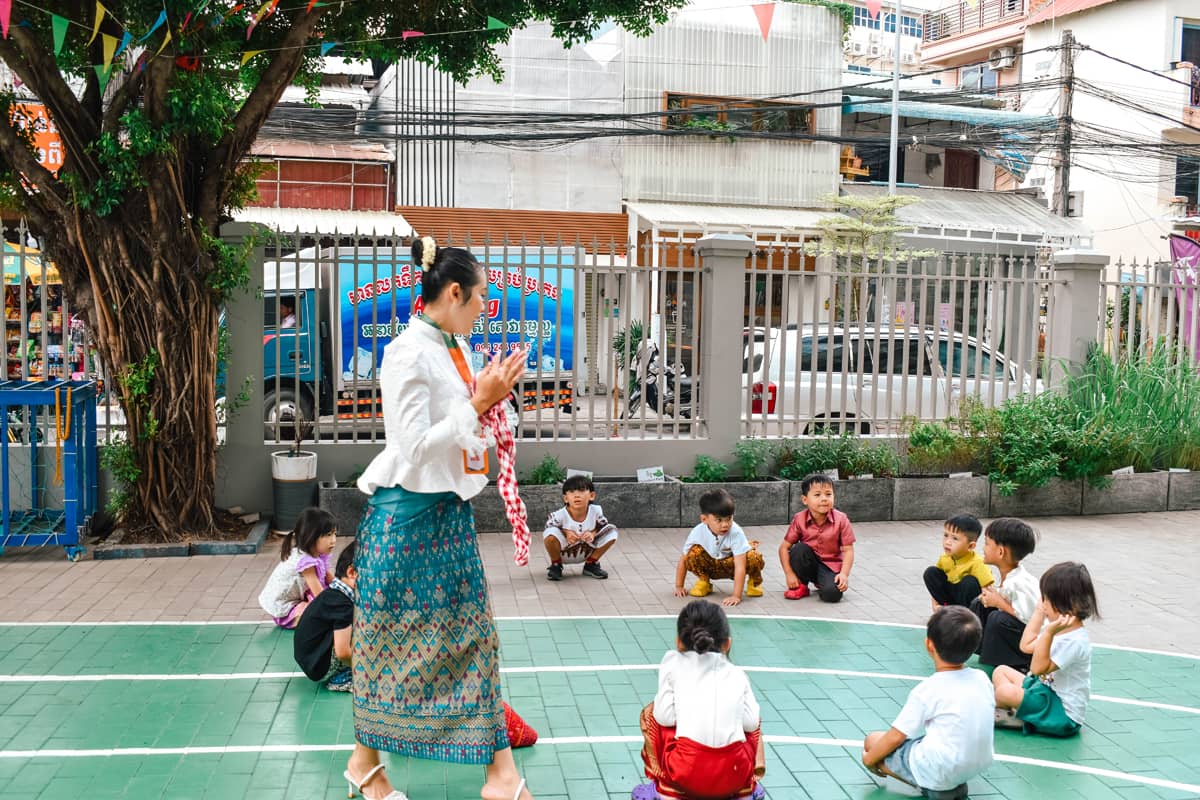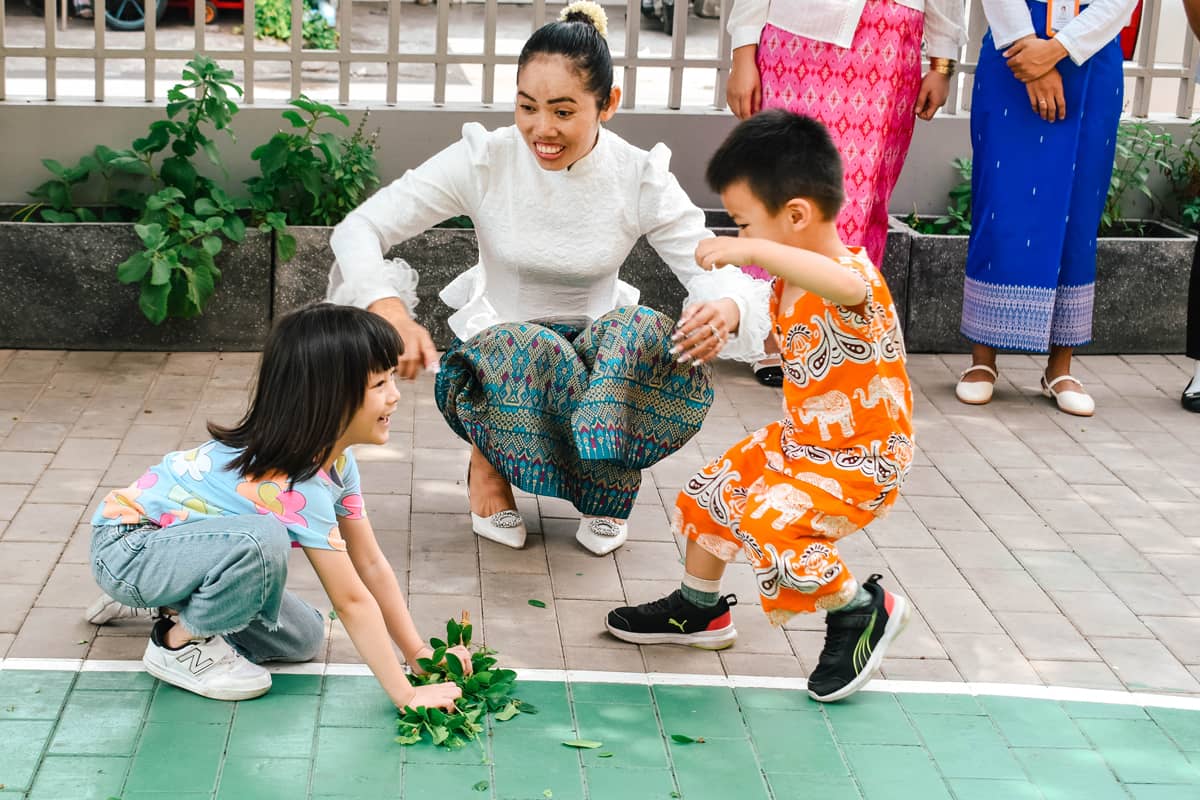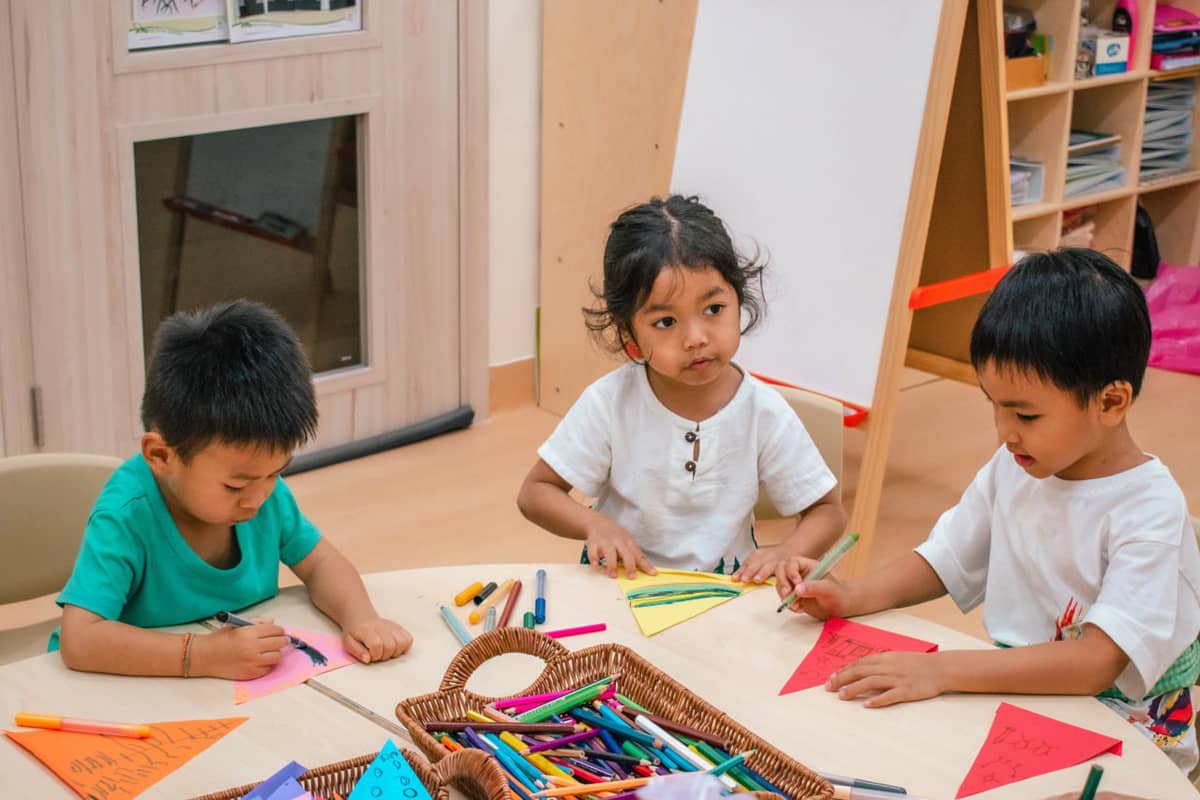Kinderland International Preschool @ Toul Kork, Phnom Penh, Cambodia, celebrated Khmer New Year with a lively event, immersing students in Cambodia’s rich culture. The celebration featured traditional performances, games, and activities, creating a joyful atmosphere for students and teachers.
Khmer New Year (Choul Chnam Thmey) marks the end of the harvest season and is a time for family, religious ceremonies, and cultural festivities. To introduce young learners to these traditions, the preschool organised exciting and educational activities, helping them appreciate Cambodia’s heritage while enjoying the festive spirit.

Kindergarten Two (K2) students built a sand pagoda.
One of the highlights of the celebration was the sand pagoda-building activity. Preschoolers worked together to build small pagodas with sand, a symbolic tradition in Khmer New Year celebrations. This activity represents the act of making merit and seeking blessings for good fortune in the coming year. As they shaped the sand into pagodas, the children learnt about the importance of community, patience and respect for tradition.


Kindergarten One (K1) students playing “Leak Kanseng” with the Khmer teacher, Nursery students playing “Chol Chhoung”
Our children enjoyed playing traditional Khmer games like “Leak Kanseng and Bos Angkunh”, fostering teamwork and social bonding with much laughter. These activities helped them develop important skills while experiencing the joy of Khmer culture.

Nursery students decorating banderitas.
Kindergarten children also explored their creativity through arts and crafts, making colourful banners, traditional decorations, and lotus flowers. Their beautiful creations were displayed around the school, enhancing the festive spirit and deepening their understanding of Khmer New Year traditions.
The Khmer New Year celebration at Kinderland International Preschool successfully blended education with cultural appreciation. The festivity was widely appreciated, highlighting the importance of preserving Cambodia’s heritage for future generations. Through these activities, the children developed a deeper connection to their country’s traditions, creating lasting memories that will stay with them for future years.